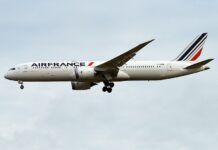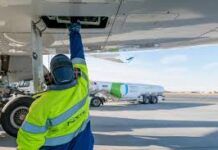
It happened the second day I was at Oshkosh. I’d vacated the Pilot’s Lounge at the virtual airport to visit Oshkosh along with a few hundred thousand of my closest friends for our annual immersion in all that is aviation. I gaped at the latest in electronics for the instrument panel, marveled at some of the airshow performances, saw a bunch of friends I only get to see once a year, wondered about a new decibel record for flatulence every time the rocket-racer’s engine was shut down during the demonstration flight, and found that even audiences as historically willing to wildly applaud anything in aviation as those at AirVenture will draw the line when it appears the emperor really has no clothes.
Setting the Mood
Every few years at Oshkosh, someone shows up with a flying machine and — employing the best medicine-show hucksterism — promises it will “revolutionize” this or that in the flying world. Too often, a lot of hopefuls then write hefty checks only to find, after a few frustrating years, their money gone and no flying machine of any sort, revolutionary or not, in their hangar. I came to the opinion that this year’s over-hyped device was the arrogantly misnamed Martin Jetpack. (It has no connection to the jetpacks that have been flying for 40 years and, disappointingly, is piston-engine powered). Once the months of talking had to stop and actual flying begin, it only managed to ascend about two feet. The handlers on each side of behemoth were apparently so confident of its performance and controllability that they would not let go of it. EAA audiences are pretty forgiving, but this time the ratio of pre-flight blather to actual performance was so bad that post-flight boos were clearly audible. It did this old cynic’s heart good to hear the public remind the publicists that the ethical practice is to flight test and then publicize, rather than the converse. Even in aviation, hubris does have its limits.

300
After listening to the idiocy of a lot of incompetent pilots on the frequency for the Ripon-Fisk VFR arrival while getting to Oshkosh and the hilarity of the not-really-a-jetpack, I was in a frame of mind where I needed to see the good and the true in aviation. Not sure where to go for that purpose, I sat down where I could watch arrivals landing on Runway 9. I’d only been there a few minutes when I saw a B-25 turn to line up on final. The pilot rolled out with the wind correction nailed and, as the airplane approached, I could hear a slow, steady, power reduction. The engines were back to idle before the pilot began raising the nose to break the descent. I realized I was watching an artist at work. The right wing was down just enough to correct for drift from the right crosswind, the descent rate progressively slowed as the nose rose, and the speed bled off until the right main tire was only a fraction of an inch above the runway. Pitch attitude was near the stall as the right tire gently made contact with the runway, sliding briefly and then spinning up. Touchdown was as slow as possible. It was obvious the pilot not only knew there was a lot of mass in motion to manage on the ground — so the slower the touchdown the better — but had internalized the cost of brakes and tires on the aging warbird and wanted them to last as long as physically possible.I could see the aileron deflection increase as the pilot kept the Mitchell’s left main in the air for a few more seconds before it, too, began to roll, leaving a small puff of smoke to briefly mark the spot. Then I saw the nose come up just a little more as the pilot took advantage of aerodynamic drag and a long runway to further save the brakes until gently flying the nosewheel onto the runway before the elevator completely lost effectiveness.I replayed the landing in my head. The pilot had approached so as to begin the flare at the threshold of the runway, wasting little of it while not risking touching down short. The pilot did not use power as a crutch to correct any potential mishandling of the flare, as that would use up more runway, probably lead to more speed at touchdown, less control on the ground and more wear on tires and brakes.I wanted to bottle that landing and take it home to pull out and study from time to time. I someday want to make one that good.As I watched airplanes continue to arrive, I could not help but compare each landing to that of the anonymous B-25 pilot. Happily, after what I had heard two days earlier over the Ripon-Fisk arrival frequency, the majority of landings were quite good and several were excellent. In the time I watched, only one pilot had me thinking that I was going to see bent metal, as a 195 came perilously close to a ground loop, and a few should have felt distinctly embarrassed. I saw a Comanche come down final at what I suspect was nearly the maximum speed allowable for the gear to be extended and then float for at least 2000 feet before whomping onto the runway.I’ve had the good fortune of learning from my betters over the years, so when I saw pilots who knew what they were about making landings that ranked as excellent, I figured I’d pay attention and see what they had in common and what I could learn.
Set Up on Final

300
While the saying that “a good landing is the result of a good approach” isn’t 100-percent true, having the airplane collected for some period of time on final increases the odds of a good landing. It makes sense: The pilot’s workload is diminished when things are in order, so there isn’t any scrambling trying to pull off a last-second-miracle touchdown. That being said, the length of time needed to get set up on final varies among individual pilots and type of airplane involved. When I’m flying certain tailwheel airplanes that are fairly blind forward, it may be best to turn all the way into the flare or have only a very short period of flying straight on final. When I’m flying with a relatively new student pilot, I want at least a half mile on final so the student can have time to observe what is going on, get the speed where it should be, start to learn the sight picture involved and see what happens when various control inputs are made.The length of the final approach necessary for the pilot to be assured that all is well depends on the pilot’s overall experience level with the type of airplane being flown, recency of experience in it and comfort level with the particular runway elevation, length, width, slope and the weather extant. It’s a judgment call for each individual pilot; however, as a guideline, I’ve learned that if I feel rushed or uncomfortable or that I can’t seem to get all the monkeys firmly secured under the inverted bushel basket before coming into the flare, I need a little more time on final. I also keep in mind that time on final is a function of both wind and distance flown; it’s really just that: time. On a windy day, the physical distance flown should be shorter in order to maintain the same length of time on final, so base leg is turned earlier and an appropriate crab is maintained on base to prevent drifting away from the airport.So far I have referred to the pilot having the airplane “collected.” I specifically haven’t used the word “stabilized,” as it only applies to jet airplanes. That term was coined when it was discovered that jet engines take some time to spool up and a low-power approach, as made normally with a piston-engine airplane, was not a good idea. With their higher stall speeds, jets were flown at about 1.3 Vso, with the landing gear and flaps extended for a couple of miles on final in a stabilized approach, in which fairly high power was required so that the engine(s) were already pretty well spooled up, which made it easier to conduct a go-around if needed.For piston-engine airplanes, it’s just plain foolish to fly a three-mile final at 1.3 Vso; the pilot will be a year older before getting to the runway, a lot of liquid ex-dinosaurs will be used up needlessly and the engine will be subjected to rapid cooling due to a big power reduction just before touchdown.A far better term is one borrowed from auto racing, where drivers refer to having the car “collected” as they go into a turn. An open-wheel racer may be going anywhere from 200 to 240 mph as it enters a turn at Indy. Depending on conditions, the driver may or may not be using the brakes to set up for the turn, may or may not have to make a gear change and may or may not have a choice of “lines” through the turn. When the driver has made decisions as to all of those variables, and the car is positioned so the driver can act on the decision, the driver says the car is collected. It’s a perfect term for that last bit of the final approach before the throttle is closed and the flare begins.Ordinarily, the speed should be at 1.3 Vso and landing flaps selected for at least the last quarter of a mile to the runway. Anything more than 1.3 Vso (plus no more than half the gust factor) coming into the flare is a recipe for problems. Extra speed is a killer on landing. It means floating, difficulty in responding to a crosswind as the extra speed is bled off prior to touchdown, and a serious risk of loss-of-control on rollout if there is any extra speed on touchdown. Having about a half a minute on speed is enough time for pilots who are current to assess the crosswind, respond to it, and make sure that the desired touchdown point is going to be hit. It gives time to make the decision to continue on to touchdown, or to realize that conditions aren’t good and make a go around before getting any closer to the planet.It’s worth recognizing that being collected may still mean a final approach that is flown at a constantly decreasing speed to target a desired speed at flare height. It is often the case that a busy terminal area means a pilot has to fly fast until relatively close to the runway and then configure the airplane for landing. The pilot can make a conscious decision to position the airplane on the final-approach path so as to generate the familiar sight picture, while still cooking right along, and then descend down that familiar path while simultaneously decelerating so as to reach 1.3 Vso at or just prior to flare altitude. The pilot has the airplane collected throughout; however, it is certainly not a technique taught to students, as the number of variables that must be handled are far higher than flying the last quarter-mile on final at constant speed. Further, if not done correctly, it creates all of the problems and dangers associated with coming into the flare too fast. Nevertheless, while it is an advanced technique, it is an appropriate way for pilots with the requisite skill level to have their airplane collected, and one sees it frequently in the bush with STOL airplane operators, at busy airports, as pilots mix with the flow. And it is carried out by the very good pilots at Oshkosh who are considerate of those behind them and don’t slow to landing speed until the last moment.
Power Off In the Flare
Watching the good pilots land generated another consistent observation: Be it a piston-single or -twin, power was reduced to idle before the flare was initiated. The experts had no tendency to use power in the flare as a crutch to allow a nose-low, runway-eating, tire-erasing, brake-frying, high-speed touchdown. They know that slow is better when the Firestones reunite with the pavement, and they know how and when to start to raise the nose to offset any sink caused by finally closing the throttle(s) due to the loss of propwash over the wing and onset of braking effect of the windmilling propeller. They use that propeller brake and know how effective it is as they raise the nose well skyward, so there is no danger whatsoever that the nosewheel might touch along with the mains, and they assure that their touchdown is within a knot or three of stall speed.
Keep It Straight

The final act of each of the good landings I was favored to savor was an anti-climax to the observer: Nothing happened. The airplane decelerated, straight ahead, to taxi speed. While there may have been a lot of action in the cockpit as the pilot kept the airplane straight, all that the rest of the world saw was the ailerons smoothly deflect all the way into the prevailing right crosswind shortly after the right main started rolling.By and large, the first part of the landing rollout is where landing accidents happen. The airplane is still rolling too fast to have much weight on the tires, and thus nosewheel steering has little effect, yet it is flying slowly enough that it takes nearly full aerodynamic control deflection for them to have a causal relationship with regard to aircraft direction. That’s why the good pilots don’t slam the nose down right after the mains start rolling in the vague hope of obtaining nosewheel steering. They keep the nose in the air for aerodynamic braking early in the landing roll while controlling direction with the flight controls, recognizing that it may take large inputs, and they put the ailerons to the stop to help with directional control in a crosswind.Once the ailerons are to the stop and the mains are rolling, the pilot is only concerned with managing and dissipating the energy of the airplane. That’s all. It entails keeping the airplane going where the pilot wants it to go and slowing down. As a general rule of thumb, aerodynamic braking is more effective than the wheel brakes on a nosewheel airplane for about the first third or so of the landing roll. After that, there is enough weight on the wheels for the wheel brakes to do their job. As a result, the only thing the pilot need concentrate on immediately after touchdown is directional control. That is the sole task at hand. And it can be a very big one, especially in a gusty crosswind. It is no time for the pilot’s attention to be diverted to changing radio frequencies, opening cowl flaps or responding to a call from the tower. Anything other than making sure the airplane goes in the direction desired by the pilot is so far down the list of what is important in the pilot’s life as to be ignored.The FAA has seen the accident data and has gotten pretty adamant about pilots not messing around during landing rollout. If you take a checkride and do anything other than bring the airplane to taxi speed and turn off of the runway, you risk the joy of having to take a checkride again.I will state that if a pilot recognizes the risk, there are times — particularly in a strong or gusty crosswind or on a short runway — when it is appropriate to raise the flaps when about one third of the way into the landing roll to hasten the onset of rolling control and brake effectiveness by putting the weight on the wheels earlier. The risk is, of course, loss of control because the pilot is distracted by the process of finding and moving the flap control. If the airplane has retractable gear, the risk increases, as pilots have been known to move the landing-gear switch rather than the flap switch. While that risk almost never results in anyone being hurt, contrasted with an accident from loss of control on rollout, the effect is, nevertheless, most embarrassing, I’m told.I watched a few more good examples of landings: the well-collected line up; precise glide-path control; power smoothly to idle prior to the flare; and the artistically conducted roundout to a nose-high touchdown with subsequent, full aileron deflection and precisely directed rollout. It was a most satisfying confirmation that there are some very fine pilots in this world, and a fair proportion of them come to Oshkosh.See you next month.
Want to read more from Rick Durden? Check out the rest of his columns.

































